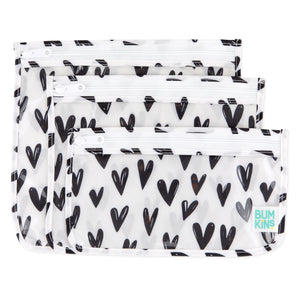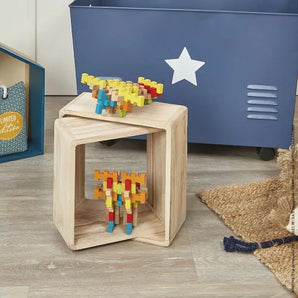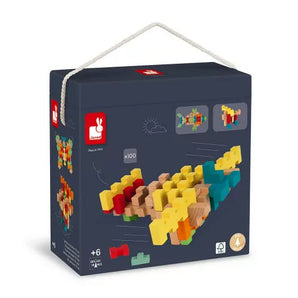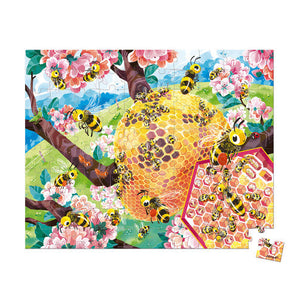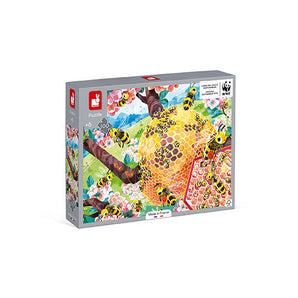Before Use: Prep your Diaper
- Diaper Covers are ready to use after the first wash.
- Snap-In-One Diapers and Contour Diapers also just need one wash before use because of our pre-washed 100% cotton terry fabric. No extra washes required!
- Use minimal amounts of soap during prepping.
- Contrary to popular internet mythology DO NOT USE bleach, baking soda, vinegar, or dishwashing soap.
Before Washing A Used/Soiled Diaper
- Ensure that most solid waste has been rinsed from the diaper into the toilet.
- If your diapers have hook-and-loop fasteners closures, ensure they are closed or covered before laundering.
- If you use disposable liners, ensure they are removed from diapers before laundering.
- In most cases, inserts will agitate out of the diaper during the wash cycle. However, to ensure thorough cleaning, pull them out of the diaper pocket prior to laundering.
- If staining is an issue, pretreat any soiled areas with a cloth- diaper-safe stain remover, following stain remover’s instructions.
Detergents, Drying & More
Detergents: Choose a detergent with no fabric softener, no optical whiteners or brighteners, and no enzymes. Do not use chlorine bleach. Do not assume that your detergent is suitable for cloth diaper use because it has “free and clear” in the title. We highly recommend Allen’s Naturally and Rockin’ Green Detergents. Both are safe for cloth diapers and work wonderfully in all water conditions.
Water Level: The washing machine should appear only half full of diapers, yet water level should be set to “full.” This ensures there will be enough water to allow diapers to agitate and move freely within the washing machine’s tub. Some HE washing machines that do not allow extra water can be "tricked" into increasing the water level by including a wet towel with the load. This will make the machine calibrate to a heavier load and fill to a higher water level.
Rinsing: It is extremely important that all the detergent is rinsed out of the diapers. Failure to rinse well can cause your diapers to perform poorly, retain odor, and in worst-case scenarios, irritate your baby’s bottom. While you get used to caring for your diapers, look in your washer on the final rinse. If there are any suds, rinse again, and again, if necessary. If you are rinsing more than 2-3 times, you are using too much detergent. When your diapers come out of the washer, they should smell like water. If they smell unclean, then use a bit more detergent. If they smell like your detergent, then use less detergent and rinse more.
Drying: Diapers can be line dried or tumble dried. Pocket diapers and covers generally dry quite quickly; natural fabric diapers and Snap-In-Ones could take a bit longer to dry. Try wool dryer balls to speed up drying time by 30% and to impart softness without coating the diaper fabric with chemicals. One of the most effective and environmentally-friendly ways to dry diapers is to line dry until almost dry, then toss in the dryer with wool dryer balls simply to soften the fabric.
Laundry Softening Agents: Whether it's liquid fabric softener or dryer sheets, fabric softeners must never be added to cloth diaper laundry. Fabric softeners can coat diapers and inhibit them from getting fully clean. They can also cause irritation to your baby and may inhibit absorbency. To naturally soften your cloth diapers, add wool dryer balls to your laundry.
Cleaning Soiled Diapers
Removing poop: Solid waste from exclusively-breast-fed (EBF) babies does not need to be rinsed. Once formula or food has been introduced, all solids must be rinsed from diapers prior to tossing into diaper pail or before laundering. A Diaper Sprayer hooked up to your toilet can be used to rinse solids from diapers. Alternatively, flushable Bumkins Diaper Liners can be used to catch solids and then be flushed along with them.
Storing Soiled Diapers
After removing solid waste, store soiled diapers in a Bumkins Wet Bag or in a diaper pail lined with a Bumkins Diaper Pail Liner. Wet bags and diaper pail liners should be washed with the load of diapers. Diapers should be laundered every 1-3 days.
Stained Diapers
Staining usually fades over time. Immediately rinsing diapers with cold water, treating with a stain remover and washing promptly can minimize staining. Babies who are not Exclusively Breastfed (EBF) are also more prone to stained diapers. Stains can also be naturally bleached by the sun if you line dry your diapers outside. Be cautious when line drying; if you leave your diapers outside for extended periods of time, the sun may damage your diapers and disintegrate your diaper fibers and elastic. Keep outside drying time limited.
